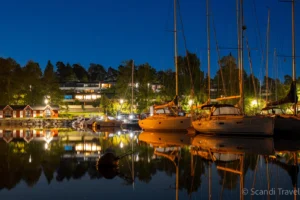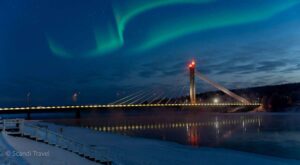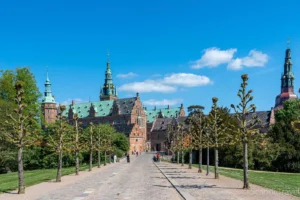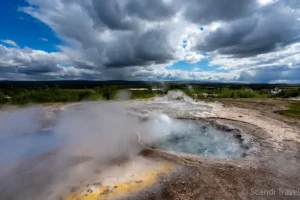Travellers and history buffs the world over gain enormous pleasure from touring those regions of the world which are rich in history: Aztec ruins in Central America; Roman cities in Pompeii and Herculaneum; European and British castles and ancient churches; Egyptian Pyramids – to name but a tiny sample. The past can really come alive in a tangible way when we walk in the very footsteps of those who have gone before and, one way or another, have made the world what it is today.
There is no better way to experience the rich history and culture of the Viking people than to embark on a modern-day Baltic Cruise.
The Vikings were a seafaring people of Germanic origin who conducted raids, trade, and exploration, and settled in Europe, Asia, and the North Atlantic islands from the late just before 800AD until about 1050AD. They travelled in wooden longships, covering an area of ocean from the Volga River in Russia and Constantinople (modern-day Istanbul) to far west as Iceland, Greenland, and even Newfoundland on the North American continent. These explorers are an integral part of the medieval history of Scandinavia, as well as Great Britain, Russia, and the rest of Europe.
The Old Norse word “viking” means “an expedition overseas”. These expeditions were historically both for trade and commerce, as well as raids, pillage, and piracy. A similar Old Norse word refers to a seaman or warrior who travels overseas – by sea.
The Viking Age in Scandinavian history lasts from the first recorded raid in the 790s until the Normans conquered England in 1066; the Normans were actually descendants of the Danish and Norwegian Vikings who were given lands in the north of France. These mariners sailed the Baltic Sea and the Norwegian Sea to make their way south; these navigators opened up access to, and settlement of, Shetland Islands, Orkney Islands, Faroe Islands, Iceland, Greenland, and Newfoundland, as well as some eastern European Slavic areas. It’s believed that some of these remote islands may have initially been discovered when sailors were blown off course.
These fascinating people were not the savages made popular in historical fiction. In the mid-800s, Scandinavian mercenaries served the Byzantine Empire; they also founded many important trading ports throughout northern Europe. There’s even evidence that they made their way as far south as Baghdad, which was the centre of the powerful Islamic Empire. While they certainly did participate in barbaric behaviour at times, they were responsible for the formation of England and Scotland as separate kingdoms; having their own pagan religion, they also quickly adopted Christianity in tandem with their own Norse gods.
A modern day Baltic Cruise is a fascinating and exhilarating way to personally experience the paths taken by these amazing historical figures. While the ships might have changed, from basic to luxurious, and modern cities have arisen along the route, the untouched coastlines and the sea itself are the same: so step aboard, take a breath, and be transported into history.





